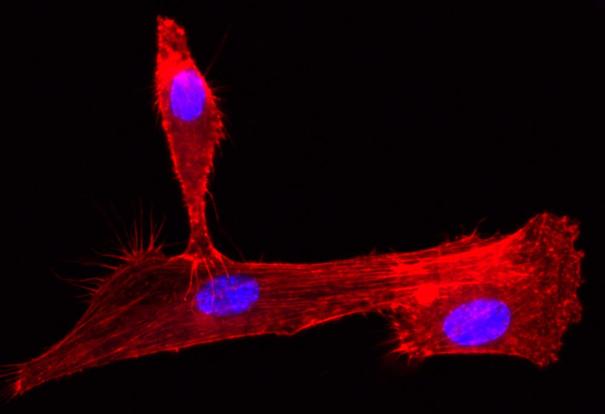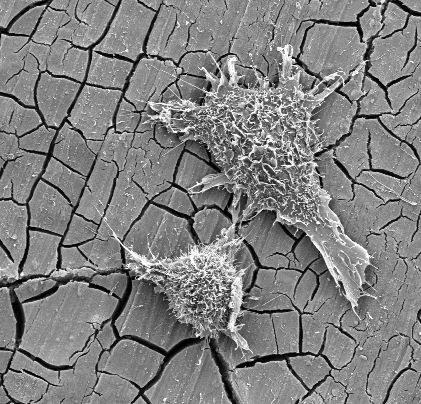Home Publications
Metallic materials for orthopaedic applications
When developing novel biomaterials for orthopaedic applications, the goals to reach are: suitable mechanical properties, antibacterial effect and the ability of material to accelerate healing. Another direction is the development of degradable metallic materials for temporary applications, which would mean no need of reoperation. Novel biomaterials developed by our co-operators must be first tested and approved. Our group deals with first stage of biomaterials testing using cell cultures and relevant methods..


Human immortalized stem cells derived from adipose tissue grown on a titanium alloy with nanotubular surface modification (nuclei in blue, actin filament in red); Electron-microscopic image of murine fibroblasts grown on degradable magnesium alloy (magnification 2000 x)
The methods we use
We determine corrosion rate in biological media under physiological conditions, we test in vitro cytotoxicity of biomaterials according to ISO 10993-5 (elution test followed by determination of metabolic activity by resazurin assay) and we examine colonisation of material’s surfaces using microscopic techniques (using fluorescence as well as scanning electron microscopy). We use murine fibroblasts and cell lines derived from human bone tissue as cell models. We also test antibacterial properties of the biomaterials.
Contact
Ing. Eva Jablonská, Ph.D.
Ing. Zdeněk Míchal
doc. Ing. Jan Lipov, Ph.D.
prof. Ing. Tomáš Ruml, CSc.
